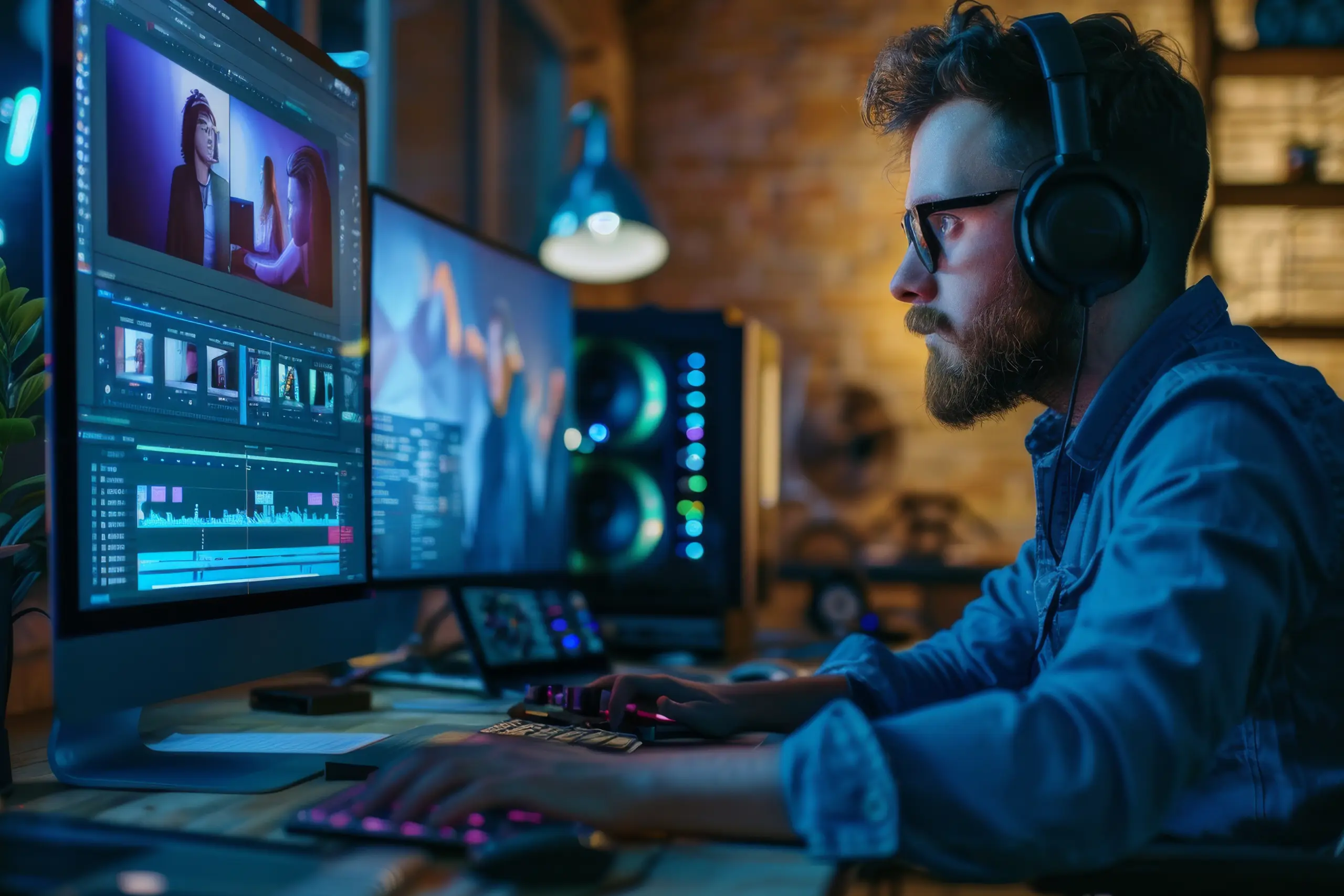The digital world thrives on visual content. To truly engage audiences today, static text is often insufficient; dynamic stories told through video are paramount. Video has become the primary medium for communication, entertainment, and education across all sectors. Its unique power lies in conveying complex emotions and information swiftly, making it indispensable for modern content creators and businesses. Understanding this fundamental shift is vital for effective digital interaction.
Visual storytelling transcends mere recording; it's about meticulously crafting experiences. This process demands a sophisticated blend of technical skill and creative vision to transform raw footage into a compelling narrative. From initial concept to final post-production, every stage contributes significantly to the overall impact. This intricate art allows creators to shape perceptions, evoke specific feelings, and leave a lasting impression on viewers. Mastering this craft is a crucial asset.
While video creation tools are increasingly accessible, achieving excellence remains a distinct challenge. High-quality visual narratives genuinely stand out in a saturated digital space, requiring a deep understanding of pacing, composition, sound design, and color grading. Overcoming these hurdles opens vast opportunities for those dedicated to perfecting their craft. It’s about transforming raw potential into powerful, clear communication, ensuring every frame serves its narrative purpose.
The influence of well-executed video content extends beyond simple viewership. It fosters deeper audience engagement, builds stronger connections, and significantly enhances brand perception. Whether utilized for marketing campaigns, educational modules, or artistic expressions, a compelling visual story resonates profoundly. It can subtly influence opinions, inspire desired actions, and create truly memorable moments. This profound reach underscores the critical importance of mastering video production.
Achieving this level of visual mastery necessitates continuous learning and adaptation to rapidly evolving technologies. Expert guidance and robust tools are essential for navigating the complexities of modern video production. The journey from initial concept to a polished, impactful visual story is intricate, demanding both artistic intuition and technical precision. Investing in superior video editing and storytelling skills is a direct investment in effective, future-proof communication.
Key Applications of Visual Storytelling
-
Marketing & Branding: Elevates campaigns with dynamic product showcases and engaging brand narratives. Pros: Increased audience engagement, stronger brand recall. Limitations: Demands consistent high-quality output.
-
Education & Training: Simplifies complex concepts through engaging visual explanations and interactive tutorials. Pros: Enhanced learning retention, wider accessibility. Limitations: Production can be time-intensive.
-
Artistic & Personal Expression: Offers a powerful medium for independent creators to share unique perspectives globally. Pros: Unrestricted creative freedom, broad audience reach. Limitations: Achieving professional polish may require significant resources.
Perspectives on Modern Video Production
Industry experts consistently stress that technical skill alone isn't enough. The true power of video editing lies in its ability to serve the narrative. A compelling story, even with modest production values, often outperforms technically superior but narratively weak content. This perspective highlights the editor's crucial role as a storyteller, shaping emotional arcs and messages through precise cuts and pacing, guiding the viewer's entire experience.
Technological advancements are continuously transforming visual storytelling possibilities. Tools like AI-powered assistants and advanced color grading suites are making high-end production more accessible. While some argue against over-reliance on automation, others see it as a chance to free creators from repetitive tasks, allowing greater focus on creative decisions. The debate centers on balancing human artistry with technological efficiency in the editing suite.
A critical discussion revolves around maintaining audience engagement in an era of shrinking attention spans. Modern visual narratives must immediately capture and sustain interest. This often means embracing dynamic editing, incorporating interactive elements, and experimenting with shorter formats. However, some argue that prioritizing brevity can compromise narrative depth, potentially leading to superficial content. The challenge is balancing impact with artistic integrity.
There's a growing discourse on balancing polished production with raw, authentic storytelling. While professional polish elevates perception, an overly produced feel can sometimes alienate audiences seeking genuine connection. Many creators now blend both, using sophisticated editing to enhance authentic moments. Looking ahead, immersive technologies like VR/AR introduce new narrative challenges, demanding adaptability from all visual creators. The future promises continuous evolution for Plunivfu and the entire industry.
Concluding Thoughts
Mastering video editing and visual storytelling is a continuous journey, blending technical skill, creative insight, and audience understanding. As digital platforms expand, the ability to craft compelling visual narratives will become increasingly crucial, forming the bedrock of effective communication across all sectors.
To excel in this dynamic field, prioritize foundational storytelling principles alongside innovative technology. Continuous learning, experimentation, and a commitment to quality ensure your visual messages resonate powerfully. The future of communication is visual, and mastering this craft places you at its forefront.

This article perfectly captures the essence of modern visual communication. The emphasis on storytelling over mere technicality is spot on. Truly inspiring!
Thank you for your kind words! We believe that a strong narrative is indeed the heart of any impactful visual content.
Interesting points about the balance between authenticity and high production. It's a real challenge to navigate in today's content creation landscape.
You've highlighted a crucial contemporary debate. Finding that optimal balance is key to resonating with diverse audiences.